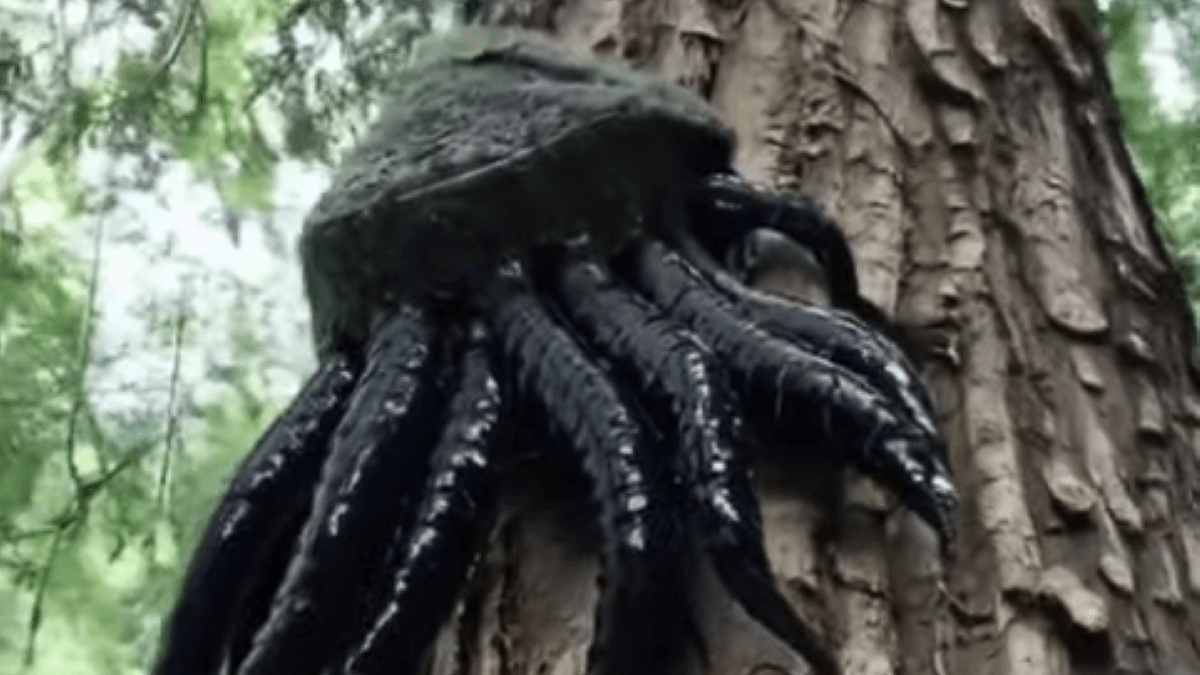The forest ecosystem is one of many extremes. You have the squirrel, who ranks among the finest of Earth’s arboreal navigators. You have various fungi, which can either unlock the secrets of the universe or kill you within minutes. And then there’s the moose, a creature who all your male friends are absolutely certain they could take in a fight, and who would body each and every one of them without even thinking much about it.
Indeed, this is one biome that’s stacked to the brim in terms of flora and fauna; so much so, in fact, that the last thing a forest should be concerned with is recruiting cephalopods into their ranks, despite the internet’s apparent obsession with willing it into existence.
Is the North American pine squid real?
Believe it or not, ladies and gentlemen, there is no such thing as the North American pine squid, the viral cryptid that has been making a resurgence on YouTube as of late. Just as well, because can you imagine if a mass of dark tentacles fell on you whilst taking a walk through the woods?
Reignited by the YouTube channel Unreal World, the video above depicts a tree that looks to have upwards of 10 tentacles growing out of it and wriggling around, later cutting to a smaller version of this imaginary miracle of nature, this one fitted with a rock-like shell.
By all appearances, the North American pine squid is an extension of one of the most famous internet hoaxes ever concocted; namely, that of the Pacific Northwest tree octopus.
Created in 1998 by a mischief-maker known only as Lyle Zapato, the tree octopus is purported to be an endangered species of cephalopod that could “be found in the temperate rainforests of the Olympic Peninsula on the west coast of North America.” Said to be an amphibious cousin of the real-life aquatic animal, the tree octopus swings from branch to branch (a form of locomotion known as tentaculation) in search of food and mates, proudly embodying its distinction as having the largest brain-to-body ratio of any mollusk.
The hoax has been the subject of a pair of publicized media literacy studies in schoolchildren, with Dr. Donald Leu having conducted a study with American seventh-graders in 2007, and again with Dutch middle-schoolers in 2017. The 2007 study reported that only six of the 53 participants were able to recognize that the website was fake, while 27 thought the website to be a reliable source of information. The 2017 study, meanwhile, saw only two of the 27 participants recognize the website as fake.
To this day, the tree octopus website is regularly updated with cephalopod-related news, and Zapato jokingly maintains that the tree octopus exists, because the world could always use a bit more imagination. Never mind how much the world’s relationship to misinformation has mutated in the years since.











Published: Sep 26, 2024 09:02 am